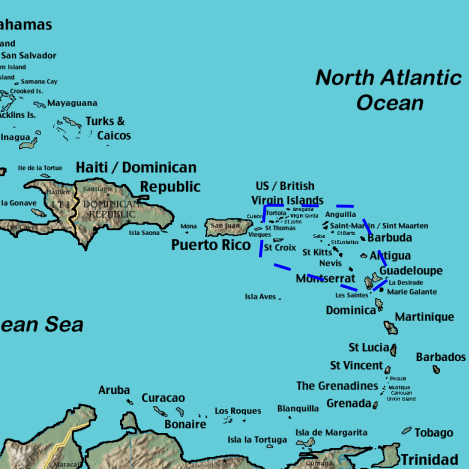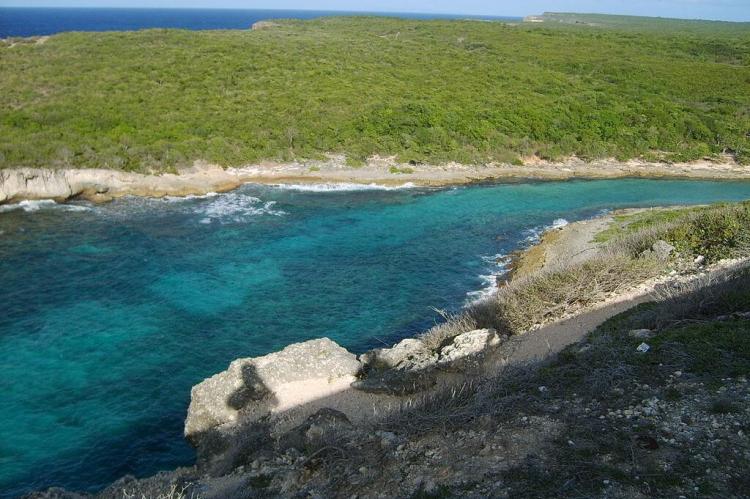The Leeward Islands Xeric Scrub: A Resilient Ecosystem
The Leeward Islands Xeric Scrub Ecoregion, spanning the northern Lesser Antilles, hosts a variety of dry, non-forested habitats along the islands' perimeters. From sandy shores to arid savannas, it sustains plants and animals resilient to semi-arid conditions and centuries of human land use.
The Leeward Islands Xeric Scrub: A Resilient Ecosystem
Stretching across the northern reaches of the Lesser Antilles in the Caribbean Sea, the Leeward Islands Xeric Scrub Ecoregion encompasses a diverse array of dry, non-forested habitats on the peripheries of these sun-drenched islands. From the sandy shores to the arid savannas, this ecoregion supports a resilient community of plants and animals adapted to the region's semi-arid conditions and the impacts of human land use over centuries.
Defining the Leeward Islands Xeric Scrub
The Leeward Islands Xeric Scrub Ecoregion covers the dry, non-forested areas of the Leeward Islands, a chain of islands extending from the Virgin Islands in the north to Guadeloupe in the south. This region is characterized by low elevations that receive less rainfall than the interior and upland areas of the islands, resulting in a semi-arid, xeric environment dominated by low-growing shrubs, succulents, and other drought-adapted vegetation.
The ecoregion encompasses portions of several major island groups, including the US Virgin Islands, the British Virgin Islands, Saint Kitts and Nevis, Antigua and Barbuda, Montserrat, and Guadeloupe. While the larger, more mountainous islands of the Leeward chain typically support lush, tropical forests, the low-lying coastal areas and peripheral regions are home to the distinctive xeric scrub communities.
Diverse Plant Communities
The Leeward Islands Xeric Scrub Ecoregion features a mosaic of plant communities adapted to the region's arid conditions and varied land use histories. These range from the coastal strand vegetation just above the high-tide line to expansive shrublands dominated by small, woody plants to savanna-like mixed woodlands and grasslands.
Many plant species in this ecoregion are associated with the region's past agricultural practices. Former cotton and sugarcane fields, for example, often feature species like the gum arabic tree (Acacia nilotica), twisted acacia (Acacia tortuosa), and sweet acacia (Vachellia farnesiana). Areas with a history of charcoal production now support communities dominated by Bursera and Pisonia fragrans.
Savanna areas within the xeric scrub ecoregion are characterized by acacias, mesquite (Prosopis chilensis), and the ubiquitous common guava (Psidium guajava). These mixed woodland-grassland habitats provide important transitional zones between the more open, scrubby areas and the forested interiors of the islands.
Adaptations to Arid Conditions
The Leeward Islands Xeric Scrub Ecoregion plants have evolved adaptations to thrive in the region's semi-arid climate. Many species exhibit drought-resistant characteristics, such as succulent leaves, waxy cuticles, and deep root systems, to access limited groundwater resources.
The low-growing, often spiny or thorny nature of the xeric scrub vegetation also helps these plants conserve moisture and deter herbivores in harsh, sun-exposed environments. The prevalence of species like acacias and Bursera, known for their fire-resistant bark, also allows the vegetation to persist in the face of occasional wildfires.
Threats and Conservation Efforts
Despite their adaptability, the Leeward Islands Xeric Scrub Ecoregion ecosystems face ongoing threats from habitat loss and the introduction of invasive species. Urban development, agricultural expansion, and other land-use changes have reduced and fragmented the ecoregion's natural habitats.
Additionally, introducing non-native plants and animals has disrupted the delicate balance of these arid island ecosystems. Invasive species can outcompete native flora, alter fire regimes, and prey upon or displace indigenous fauna, posing significant challenges to conservation.
In response to these threats, some protected areas have been established within the Leeward Islands Xeric Scrub Ecoregion, including the Virgin Islands National Park in the US Virgin Islands and the Guadeloupe National Park in Guadeloupe. These and other conservation efforts aim to safeguard the unique biodiversity and ecological integrity of this resilient, sun-drenched region of the Caribbean.
The Ecoregion's Significance
The Leeward Islands Xeric Scrub Ecoregion represents a distinctive and valuable component of the Caribbean's natural heritage. Despite the challenges posed by its arid environment and human impacts, this region supports a diverse array of plant and animal life adapted to thrive in these sun-baked, drought-prone landscapes.
As a transitional habitat between the coastlines and the interior forests of the Leeward Islands, the xeric scrub communities play a critical role in the overall ecological functioning of these island ecosystems. Continued efforts to understand, protect, and restore these resilient ecosystems are essential for preserving the natural and cultural legacy of this remarkable corner of the Caribbean.

Map depicting the location of the Leeward Islands xeric scrub (islands inside the dashed blue box).
